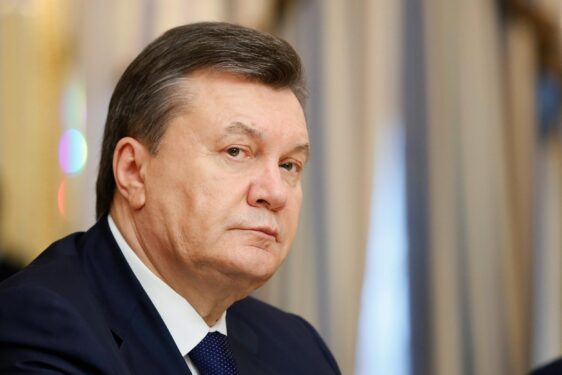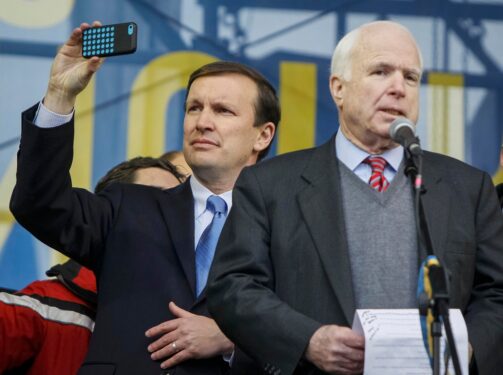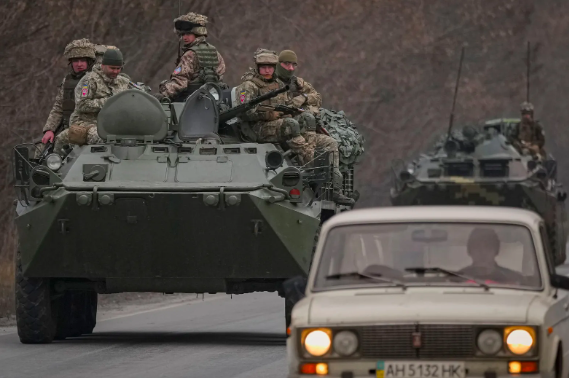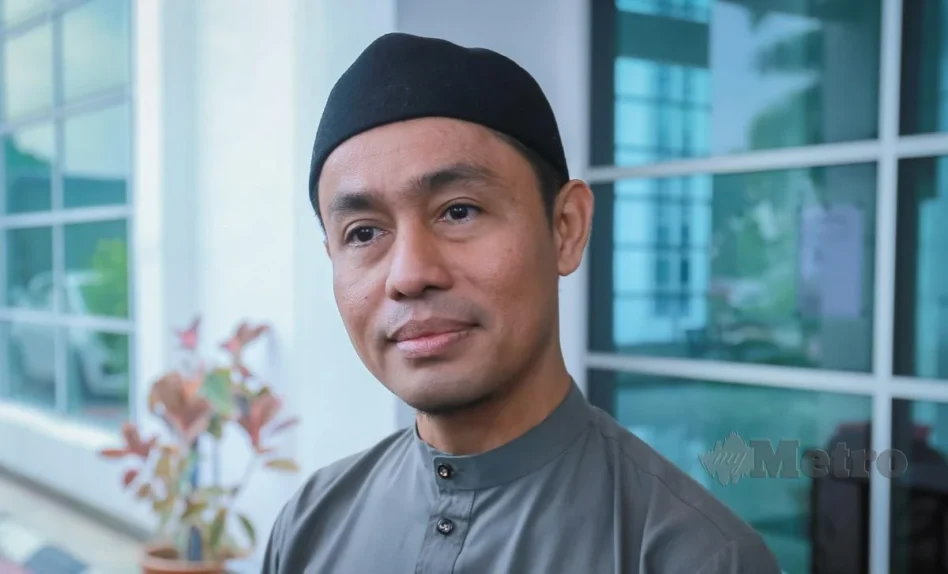ONE thing to remember about the Ukraine war is that it didn’t start in February, as many might think. It would be really short-sighted if we believe the war started then.
It started eight years ago in February 2014 during the aftermath of the Maidan Revolution in which a democratically-elected president of Ukraine was deposed with US interference; he managed to escape to Moscow and asked for Russian assistance.
In late 2013, the then-Ukraine Government under former premier Viktor Yanukovych was caught between a rock and hard place.
There was a tussle for influence between Russia and the European Union (EU) when the then Ukrainian prime minister Mykola Azarov asked for €20 bil (US$27 bil) in loans and aid.
The EU was willing to offer €610 mil (US$838 mil) in loans, but Russia was willing to offer more (i.e. US$15 bil) as well as cheaper gas prices.
In addition, the EU demanded major changes to Ukraine’s regulations and laws, but Russia did not.
Yanukovych then refused to sign a political association and free trade agreement with the EU at a meeting of the Eastern Partnership in Vilnius, Lithuania, on November 2013, choosing closer ties with Russia and the Eurasian Economic Union instead.
This led to a wave of large-scale protests known as Euromaidan, which went on for months as a prelude to the Maidan Revolution in February 2014 where clashes between protestors and special riot police became violent, resulting in the deaths of nearly 130 people, including 18 police officers.

Basically, the people in Western Ukraine favoured an agreement with the EU, while those in the east and south favoured closer ties with Russia.
Early elections
In the wake of the bloody protests, on Feb 21, Yanukovych and the leaders of the parliamentary opposition signed a settlement agreement that called for early elections.
The following day, Yanukovych fled from the capital ahead of an impeachment vote that stripped him of his powers as president.
To make matters worse, shortly after his overthrow and exile to Russia, Ukraine’s eastern and southern regions erupted with pro-Russia unrest, with leaders of the Russian-speaking eastern regions of Ukraine declaring their continued loyalty to Yanukovych.
On Feb 23, the Ukrainian Parliament adopted a bill to repeal the 2012 law, which gave the Russian language an official status.
Though the bill was not enacted, the proposal provoked negative reactions in the Russian-speaking regions of Ukraine, intensified by Russian media saying that the ethnic Russian population was in imminent danger.
On Feb 27, an interim Government was established and early presidential elections were scheduled.
However, the following day, Yanukovych resurfaced in Russia and declared in a press conference that he remained the acting president of Ukraine, just as Russia was beginning its overt military campaign in Crimea.

Russia considered the overthrow of Yanukovych to be an illegal coup and did not recognise the interim Government. On March 1, Russia’s Parliament approved a request from its president Vladimir Putin to deploy Russian troops to Ukraine.
Where was US interference in all these events?
Colour revolution
These events were colour revolutions – a term used since around 2004 by the media worldwide to describe various anti-regime protest movements and accompanying (attempted or successful) changes of Government that took place in post-Soviet Eurasia during the early 21st century, namely countries of the former Soviet Union, the former Yugoslavia and China.
The term has also been more widely applied to several other revolutions elsewhere, including in the Middle East, the Asia-Pacific region and South America, dating from the late 1980s to the 2020s.
The first successful attempt at colour revolution (which wasn’t called by that name then) was the US Central Intelligence Agency (CIA)-engineered anti-regime protests in Iran that led to the downfall of the democratically elected ex-prime minister Mohammad Mosaddegh in favour of strengthening the unpopular monarchical rule of Shah Mohammad Reza Pahlavi on Aug 19, 1953.
If you are puzzled over the continued Iranian animosity towards the US today, it is because this 1953 incident remains etched in the collective psyche and memory of the Iranians.
In the case of Ukraine, the colour revolution started in December 2013 with the appearance of US Republican Senator John McCain in company with Democratic senator Chris Murphy working out the crowds in Ukraine, with the former saying:
“Ukraine will make Europe better and Europe will make Ukraine better. We are here to support your just cause: the sovereign right of Ukraine to determine its own destiny freely and independently. And the destiny you seek lies in Europe.”

Then, there was a recorded phone conversation leaked on Feb 4, 2014, between then US State assistant secretary Victoria Nuland and US ambassador to Ukraine Geoffrey Pyatt discussing their wishes for a Ukraine transition to an interim Government, and specifically, the roles in which they hoped to see the prominent opposition leaders played.
These were clearly meddling in the internal affairs of a country even if their aim was to protect the democratic values of the West.
Failed state
All attempts of the past to impose democratic values on a country by the US had turned the country concerned into a failed state.
Look at Iraq, where the US went to war to establish democratic values there under the pretext of finding Saddam Hussain’s weapons of mass destruction: Saddam was overthrown, weapons of mass destruction were not found and democratic institutions flourished but Iraq remains no better today than it was under Saddam.
Ditto with Libya, Syria and Afghanistan and the colour revolutions that gave rise to the Arab Spring – all the countries involved remained worse off today than before the Arab Spring occurred.
In the case of Ukraine, the colour revolution enunciated by the US in late 2013 was indeed successful in causing a regime change but before the change could be consolidated, Russia preempted it.
It sent its army to eastern Ukraine to bolster the pro-Russian separatists who had by then formed the People’s Republics of Donetsk and Lugansk in eastern Ukraine, collectively known as Donbas.
This was actually the beginning of the Russia-Ukraine war, which lasted for a few months before ceasefires were implemented under the Minsk agreements brokered by Germany and France in May 2014.

After eight years of the Minsk agreements (whose ceasefire was continuously violated by both parties), Russia sent troops into Ukraine again on Feb 24 this year, citing Kiev’s failure to implement the Minsk agreements, which were designed to give the regions of Donetsk and Lugansk special status within the Ukrainian state.
Former Ukrainian president Pyotr Poroshenko has since admitted that Kiev’s main goal was to use the ceasefire to buy time and “create powerful armed forces.”
It is in this context one can understand what Turkish President Recep Tayyip Erdogan said in an interview with the PBS news outlet on Sept 20. Erdogan said a settlement in the Ukrainian conflict would require Russia to return all “invaded” lands to Ukraine.
“If peace is going to be established in Ukraine, of course, the returning of the land that was invaded will become really important. This is what is expected. This is what is wanted,” he reportedly said.
Erdogan added that “no invasion can be justified,” but acknowledged at the same time that “prior to the breaking out of this conflict, many things had happened.”
He has maintained a largely neutral position on the Ukrainian conflict and emphasised to PBS that the UN should conduct investigations into alleged war crimes and play the role of arbitrator between the sides.
“We are not going to defend a single leader. Instead, we have to be looking for a conclusion that will satisfy all parties involved,” he stressed. – Oct 2, 2022
Jamari Mohtar is the editor of Let’s Talk!, an e-newsletter on current affairs.
The views expressed are solely of the author and do not necessarily reflect those of Focus Malaysia.
Main photo credit: Shutterstock









